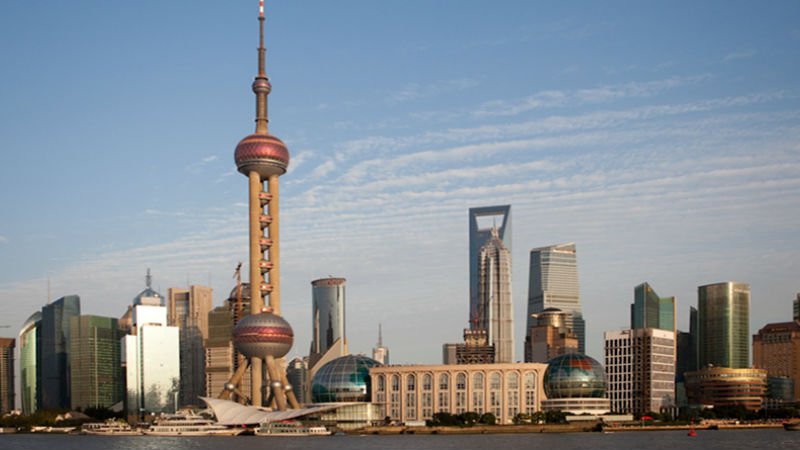Luxury hotels are facing fierce competition, but could be overlooking a lucrative segment in affluent and independent Chinese female travellers, writes the China team of global marketing consultancy Added Value.

Luxury hotels are facing fierce competition, but could be overlooking a lucrative segment in affluent and independent Chinese female travellers, writes the China team of global marketing consultancy Added Value.
Luxury hotels are facing fierce competition, but could be overlooking a lucrative segment in affluent and independent Chinese female travellers, write Panos Dimitropoulos, Account Director of Cultural Insight & Sam Woollard, Client Development Director, of global marketing consultancy Added Value.
The travel industry is one of the emerging growth powerhouses in China where double-digit growth rates are disappearing from many sectors. According to China National Tourism Administration, Chinese people made 2.02 billion trips in the first half of this year, 9.9% higher than a year ago.
Travel-related consumption hit 1.65 trillion yuan, 14.5% higher than a year ago and 4.1% higher than retail sales growth, the administration said. According to their calculations, 61.9 million Chinese people travelled overseas in the first half of the year, 16.11% higher than a year ago.
“ Chinese women are sophisticated, confident, and independent consumers that deserve special attention from brands ”
Yet, despite the growth that the travel industry has seen, the competitive environment for hotel brands has never been so tough. Within the next four years it is predicted that around 60-70% of hotels within the Asia Pacific region will have experienced a significant increase in the number of Chinese tourists. New hotels are entering the China market at an alarming rate and brands are now realising the importance of successfully positioning themselves for growth.
One potential area for growth that should not be overlooked is the rise of the female traveller. As China continues to change, women have been identified as a key segment of interest. Becoming progressively stronger in real life and in the media, Chinese women are sophisticated, confident, and independent consumers that deserve special attention from brands.

Table 1: Data from CTR China National Residence Survey
In 2015, domestic travel in China is expected to rise by 25%. The awareness of Asian brand, Shangri-La, is higher among Chinese travelers than any other international luxury-hotel brand. China is Starwood’s second largest and fastest growing market. Sheraton was the first international hotel to open in China and is one of the most popular hotel brands among Chinese consumers.
Many international hotel brands, such as Intercontinental Hotel Group (IHG) with its Hualuxe brand, designed specifically for Chinese travelers, are hoping to bank on the growing number of affluent Chinese travelers. Luxury international hotel brands have seen a big increase in Chinese guests and many have also begun to move quickly into second and third tier cities. Ritz-Carlton, Meliá, and the Four Seasons will open in Tianjin. Fairmont and Kempinski are to open in Tiayuan, the Four Seasons in Shenzhen, and the Ritz-Carlton and Mandarin Oriental are due to expand into Chengdu. Anatara opened a resort in Yunnan province in February, and Banyan Tree, Aman, and St. Regis have plans to open new properties Lijiang.

Table 2: Data from CTR China National Residence Survey
Local budget hotels are also gaining momentum in China. According to CTR China National Residence Survey, among the top 10 most popular budget hotel brands in China, 8 are Chinese brands. Competition is getting tougher for international brands with the rise of local brands that have a strong appeal to the Chinese domestic travellers. International hotels will need to look at new ways in which to attract Chinese guests and gain insights into new growing segments of the market.
With women becoming more affluent and exposed to foreign culture and lifestyles, they are developing a refined sense of quality. Rejecting crude materialism, they are instead seeking rich experiences, refined personal taste and understated discernment. From posting images of products they’ve purchased, women are now increasingly posting images of themselves travelling domestically and overseas.
Hotels, however, are struggling to understand Chinese culture and female travellers. As materialism gives way to more spiritual quests, hotel brands need to rethink their branding strategies and consider ways to be more relevant.
Engaging with cultural experts, for example, is one way hotels can take their branding a step further, offering valuable insight through the lens of culture and capturing ideas the consumer cannot express. Cultivation of the mind and self-development are becoming key motivators in leisure and domestic life.
“ As China continues to change, women have been identified as a key area of interest and a lucrative segment ”
Women are also using their smartphones more, and are increasingly active in leisure and travel research. Consequently, research has found that women are opting for nature based retreats that allow them to reconnect with themselves and escape the city and busy work life pressures. They want to relax in a clean, restorative environment while engaging in activities like yoga, nature walking or spa retreats. In response, some hotels and resorts are now proactively offering female specific packages to try and better reach this group of consumers as they continue to gain importance in the market.
In conclusion, as China continues to change, women have been identified as a key area of interest and a lucrative segment within the wealthy traveler set that cannot be ignored.
Hence, while the Chinese taste for luxury is maturing and becoming increasingly sophisticated, we can expect more hotel brands to focus their efforts on this growing sector of affluent and independent Chinese female travellers.










